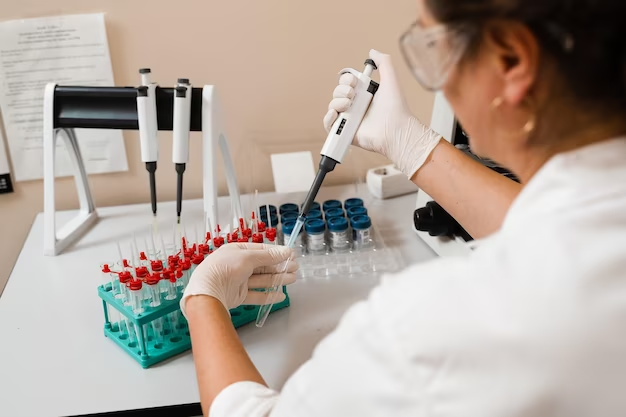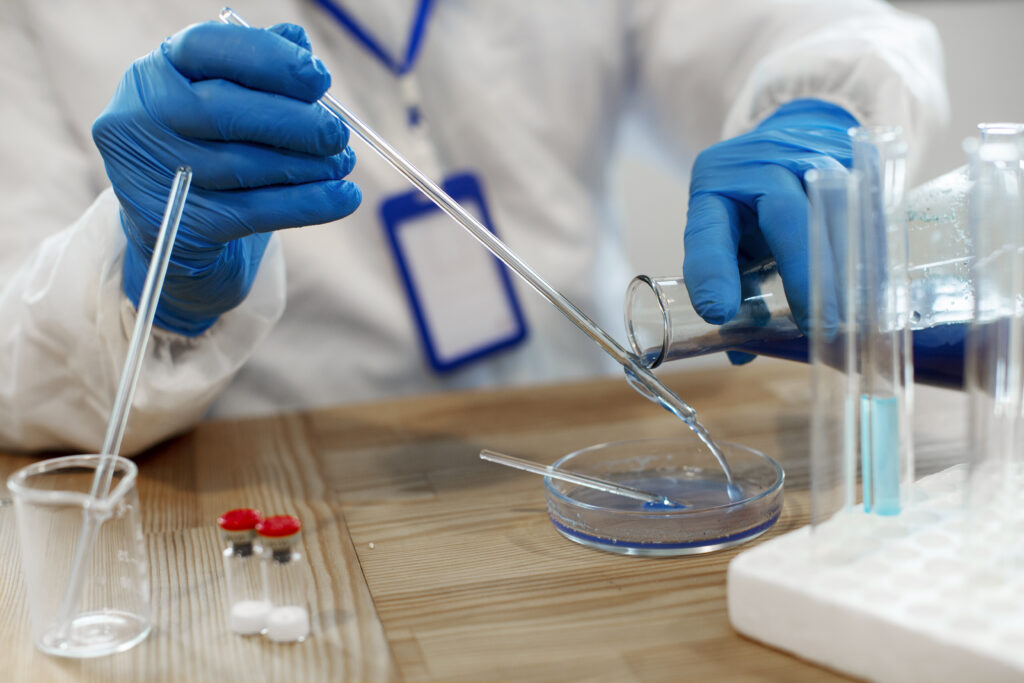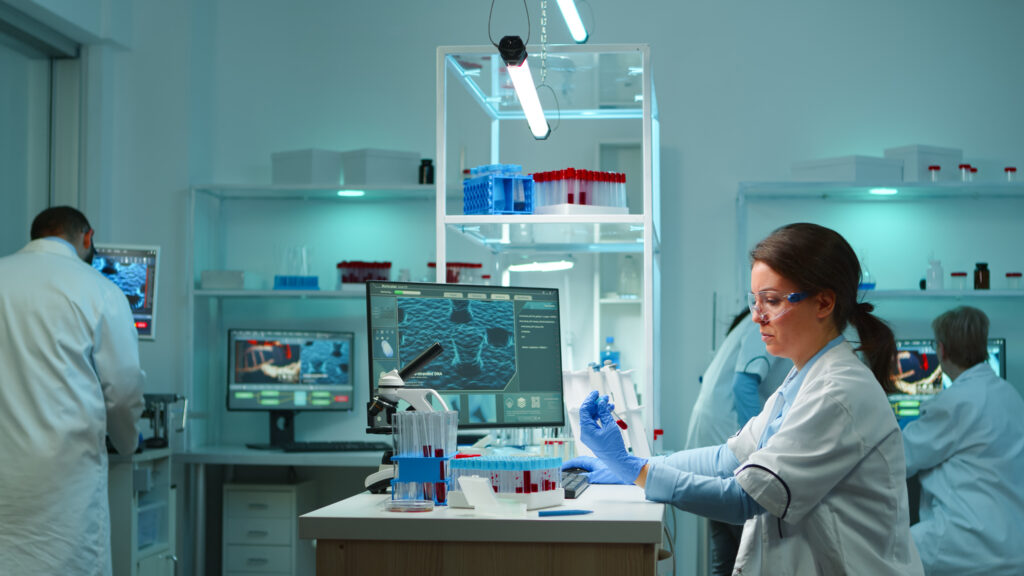Introduction
Biochemical analyzer is one of the most commonly used important analytical instruments in clinical testing. It is mainly used to measure various biochemical indicators of serum, plasma or other body fluids, such as glucose, albumin, total protein, cholesterol, transaminase, etc., in auxiliary diagnosis , Efficacy testing, health examination, drug abuse, etc. are of great significance. It is an indispensable clinical testing equipment for medical and disease control units at all levels, and it is also a commonly used instrument for epidemic prevention, quarantine and biological research. Its clinical application scope is becoming wider and wider, and it is one of the fastest growing fields in the world’s medical device industry.
Biochemical analyzers have revolutionized the field of medical diagnostics and research by providing accurate and rapid analysis of biological samples.Over the years, these instruments have undergone significant advancements, resulting in improved functionality, increased efficiency, and enhanced precision.

What Has Changed In Biochemical Analyzer?
By using different reaction cups, the centrifugal analyzer can reduce the mutual contamination between the samples to be tested and greatly shorten the cleaning time, but there are still problems such as low flexibility of the test items and poor absorbance. The separation analyzer adopts the principle of post-splitting and dual-wavelength measurement technology, which not only significantly reduces the light noise, but also significantly improves the sensitivity of the analysis, effectively overcomes most of the shortcomings of the centrifugal analyzer, has a high degree of automation, has the advantages of flexible use and instant detection, and has now fully replaced the centrifugal analyzer. At present, the most advanced automatic biochemical analyzer structure principle technology refers to the microfluidic chip technology that integrates the sample preparation process, reaction process, separation process and detection process into the micron chip. The chip material is mainly polydimethylsiloxane, and capillary electrophoresis, polymerase chain reaction, enzyme reaction, laser-induced fluorescence detection and PCR reaction can be realized in the microfluidic chip. It has significant advantages such as high precision, less reagent dosage and short test time, and has been gradually applied and promoted in clinical practice.

The photometer is the core technology in the automatic biochemical analyzer, which can carry out quantitative and qualitative analysis of the substances in the solution to be measured. The new automatic biochemical analyzer has made great technological breakthroughs and improvements in the optical part. Compared with the old optical system, the new automatic biochemical analyzer has applied the newly developed optical/digital signal direct conversion technology, which can convert the The optical signal is converted into a digital signal, which not only helps to reduce the interference of external factors on the optical path, but also reduces signal attenuation and improves the overall test accuracy.
Early biochemical instruments mostly used air baths for heat preservation, but air baths are greatly affected by temperature and are prone to problems such as uneven heating. At this stage, a constant temperature liquid circulation indirect heating dry bath technology has gradually formed. The method of placing a stable constant temperature liquid with a large specific heat capacity continuously provides a stable and uniform temperature environment for the samples to be tested, effectively reducing the impact of temperature on the accuracy of the automatic analyzer.

The continuous improvement of sampling technology is also one of the key technologies to improve the automation of biochemical analyzers. At this stage, the sampling system mainly relies on liquid level detection technology, follow-up tracking technology and blockage detection technology, which can also effectively prevent crossover between samples to be tested. Infection, improve the test accuracy of the analyzer. Traditional stirring adopts two stirring technologies of magnetic bead type and vortex type, which have gradually emerged at this stage.
The current piezoelectric stirring, multi-stirring unit and other stirring technologies have been improved to increase the stirring force, shorten the stirring time, avoid the influence of light scattering by microbubbles on the test results, and greatly improve the reliability of the test.
In recent years, due to its complex structure, cumbersome operation and cross-contamination restrictions, “flow biochemical analyzers” have gradually faded out of the market, and have been basically eliminated except for a few instruments. However, the centrifugal biochemical analyzer has not developed much due to the limitation of its structure and working principle because of its optional function and speed.

According to investigation and analysis, discrete biochemical analyzers have great potential in structural design, functional development and application of new technologies, and have developed rapidly in recent years. At present, “advanced biochemical analyzers” generally have the following functions: ①Automatic identification of samples and reagents with barcodes; ②Automatic cleaning of cuvettes and application of inert liquids, which can effectively prevent cross-contamination ③Software development strengthens the optional functions of the instrument; ④Various self-inspection functions, automatic re-inspection functions and warning functions; ⑤Emergency sample insertion function; ⑥Management functions (including experimental program management, data management, accusation management, etc.).
It is understood that automatic biochemical analyzers continue to adopt cutting-edge technologies in their development, and their measurable reaction types and corresponding inspection items have greatly increased the precision, accuracy and speed of determination, and their software functions have also increased compared with the past. The instrument also avoids unnecessary human interference during the detection process, the degree of manual participation is greatly reduced, and the flexibility and automation of the instrument are greatly improved. In terms of reagent consumption, the consumption of automatic biochemical analyzers is also decreasing.
Conclusion
Summarize the journey of innovation in biochemical analysis instruments, from early milestones to current cutting-edge technologies. Emphasize the instrumental role these advancements play in advancing scientific knowledge, improving healthcare outcomes, and driving future discoveries. Encourage collaboration and continued research to push the boundaries of what is possible in biochemical analysis.
Why Choose Us?

CNMEDITECH is dedicated to the long-term research of the biochemical analyzer market. Our mission is “People oriented and win-win strategy,Matching the real needs of the region with a focus on human health,To be the world’s first-class medical field solution expert”. We have been manufacturing high-quality medical device products for more than ten years.
We have built our reputation on delivering quality healthcare solutions on time and on budget. All our products comply with international health and safety regulations and all products come with a warranty.
Are you still worrying about your customer’s product needs? Are you still angry that the product is expensive?Our biochemical analyzers have various models and support personalized product customization.
Our company has many styles to choose from. In addition, we have high-quality pre-sales consulting guidance and professional after-sales service, all to meet your needs.
Whether it is a cost-effective or high-end product, there will always be something suitable for you. If you have any needs for products, you can ask us, our factory will meet your needs as soon as possible, and we will make every effort to provide you with solutions.Feel free to send us your inquiries.
